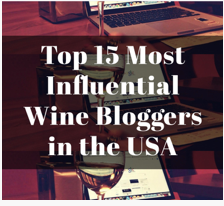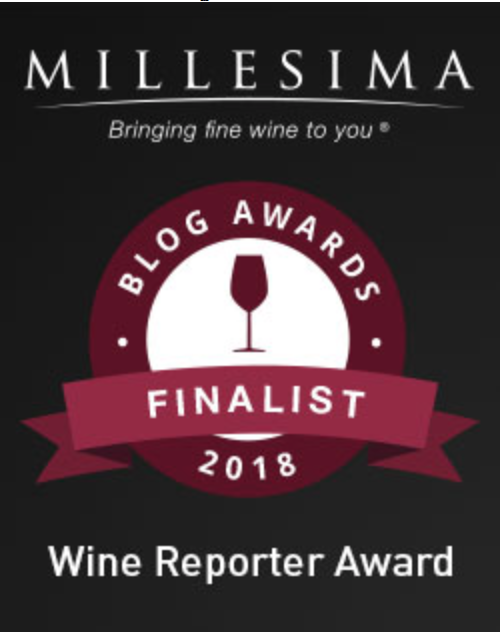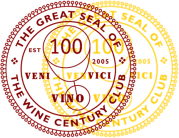A couple weeks ago, I invited a few writers here in Houston to my house for what I believe to be the largest annual blind tasting of American True Rosés in the country.
What, one might ask, is a “True Rosé“?
Well, there are essentially three ways to make a rosé wine. The first, which is rarely practiced outside of sparkling wine production, is a simple blend of red wine and white wine. The second, which is widely practiced around the world, is called the “Saignée Method” where shortly after a red grape crush, a portion of the grape juice (after brief contact with the skins) is bled off (“saignée” means “bled” in French). This bled off wine is then vinified as if it were a white wine.
The third option is what I call a “True Rosé.” In this process, the grapes are raised, picked, and processed with the idea of making rosé in mind. True Rosés are therefore not a byproduct of red wine production, they are intentionally or purposefully made. They are True Rosés.

A couple of years ago, a few days before The World’s Largest Blind Tasting of American True Rosés I got into a rather heated argument on Twitter with two Master Sommeliers worlds away (one, who literally wrote a book on rosé, was in the UK and the other, who made a rosé by blending red and white wine [a practice that is practically unheard of outside of Champagne] was in Australia). They both took exception to my use of the term “True Rosé” to characterize an approach to making rosé that otherwise does not have an agreed-upon term to describe it.
As I have mentioned before, the term saignée is largely understood and accepted to describe what a True Rosé is not. (For those just joining, a saignée rosé is a byproduct of red wine production where, after a brief maceration, a portion of the juice is “bled off.” Until relatively recently, that bled off juice was either sold off as bulk wine or simply let run down the drain. This is done to both further concentrate the remaining juice on the skins and today, to make a rather quick rosé. The problem is that the juice was intended to make red wine and is thus often a bit lacking in acidity which is perhaps the defining characteristic of a good rosé.)
Their collective contention? By using the adjective “true” I was inherently implying that all other rosés were “false.” While I understand their position, I tried to explain (and by their responses it was largely unsuccessful) that the word “true” has many definitions such as an “ideal” (true love) or “consistent” (true to character) or even “narrow” (in the truest sense).
They did not seem swayed by my argument as they remained fixated on “if something is not true, then it must be false.” In a desperate attempt, I mentioned the concept of a bicycle wheel being “true” or “out of true” but that landed like a lead zeppelin.
Look, there are really good, even outstanding saignées out there (one of my absolute favorite rosés is a saignée—Tongue Dancer by James MacPhail), but all other factors being equal, there is no doubt in my mind that rosés that are made intentionally, id est, a True Rosé, are better than those that are byproducts of red wine production.
Feel free to argue with me. Everyone has a right to their own opinion, no matter how wrong it might be.

Getting chilly (hopefully).
A couple of weeks ago, seven of us tried 68 American Rosés, trying to find the best. As promised, I am publishing my actual notes from the tasting, which we tasted in 17 flights of four wines. Here are flights 9-11:
2021 Purple Star Rosé, Columbia Valley, WA: Retail $20. 70% Mourvedre, 30% Syrah. A little darker than the typical Provençal style, but not by much. Lovely, candied fruit, minerality, just a delight on the nose. Whoa. Even better on the palate, if that is possible. Great fruit and tartness, depth, and just a hint of minerality on the finish. Yowza. Outstanding. 93 Points.
2021 Old Zin Vines Primitivo OZV, California: Retail $15. 100% Primitivo. Light cotton candy color in the glass with a lovely, albeit muted nose while the palate is much richer than I expected, with oodles of fruit that could use a bit more acid (or a little less sweetness). Still, Very Good. 89 Points.
2021 One Stone Rosé of Pinot Noir, Central Coast, CA: Retail $18. On the dark side for rosé, with darker red fruit (cranberry) and a violet component. Big fruit, nice acidity, good balance. The dark color might turn people away, perhaps, but this is a lovely wine. Would be even better with some food, but this is outstanding. Outstanding. 93 Points.
2021 Spicewood Vineyards Grenache Rosé, Texas: Retail $25. Medium pink with an odd nose. I hate to use that word, but I am not sure what it is. Beneath, there is some rich fruit. The palate is also odd but I like it, well, oddly. I really need to know more of what is going on here. Very Good. 88 Points.

A few of the True Rosés waiting their turn to get chilly.
2021 Cline Cellars Mourvèdre Rosé Contra Costa County, CA: Retail $21. Medium to light pink with orange highlights and a nose that while a bit muted, exhibits some lovely fruit. Tons of fruit on the palate as well, so much that it comes off as a bit sweet. The acidity tries to catch up, bet never quite gets there. Very Good. 88 Points.
2020 Fullerton Wines Pinot Noir Rosé Three Otters, Oregon: Retail $22. Lovely light salmon with plenty of fruit on the nose but also a medicinal aspect that is, well, not great. The palate has, well, something odd going on. Um. Not “flawed” but it sure is, well, odd. Good. 86 Points.
2019 Sosie Syrah Rosé Vivio Vineyard, Bennett Valley, CA: Retail $25. Medium salmon with nice ripe strawberry, and a sweetness on the nose. Initially, it is a bit lacking on the palate—in both fruit and acidity, but both come through on the finish. Very Good. 88 Points.
2021 Amarose Rosé Lodi, CA: Retail $25. 25% Grenache, 25% Cinsault, 25% Carignan, 25% Mourvèdre. Light to medium pink with a lovely, fruity nose. The palate is also quite lovely and beautifully balanced. Not the “best” wine in this tasting, but it is not straining too hard to look up at those above it. Outstanding. 93 Points.







